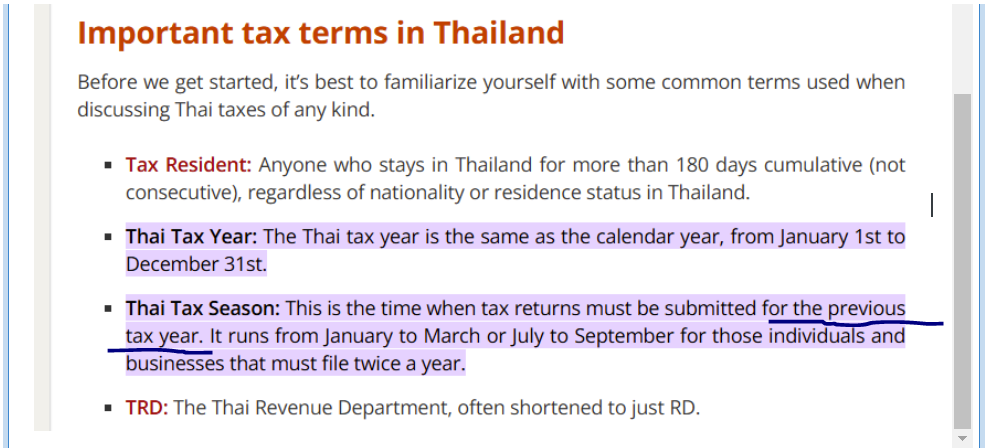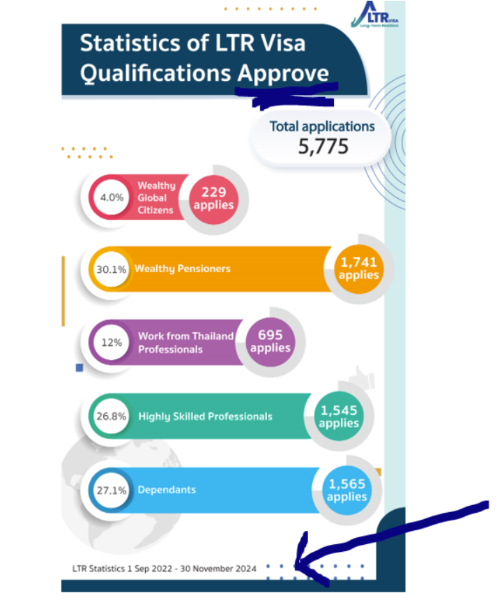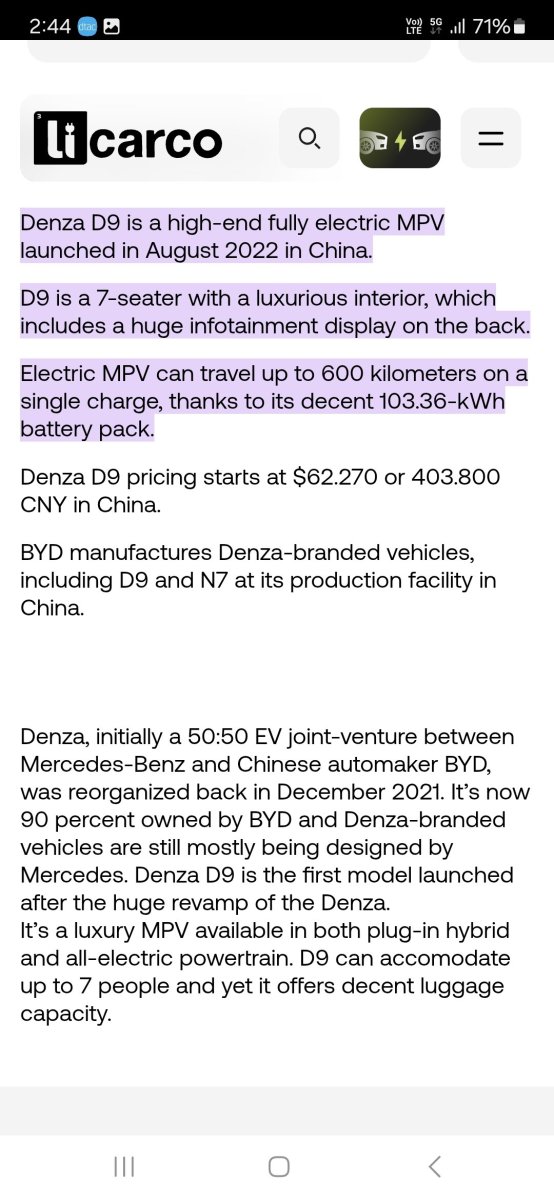-
Posts
29,048 -
Joined
-
Last visited
Content Type
Events
Forums
Downloads
Quizzes
Gallery
Blogs
Everything posted by Pib
-
https://www.nytimes.com/2025/02/17/business/porsche-china-germany.html Why Porsche Is No Longer a ‘Premium’ Sports Car in China Chinese drivers are buying affordable electric vehicles loaded with new technology, a trend that is redefining high-end vehicles and hurting German automakers. After decades of dominating China’s market for high-performance cars with precision engineering, German automakers are losing out to Chinese rivals that have shifted the definition of a high-end car to one that is electric, smart and affordable. Many new Chinese vehicles resemble their German rivals, like the wildly popular Xiaomi SU7, which mimics Porsche’s Taycan. The SU7 rivals the Taycan in power and braking, but it also includes integrated artificial intelligence that can, for instance, help with parking and greet drivers with their favorite song. The cherry on top: It sells for roughly half the price of a Taycan. As a result, the German automakers that for decades commanded China’s premium car market are now seeing their sales dwindle, while Xiaomi — a leading Chinese smartphone manufacturer — last year sold more than 100,000 models of the SU7. Among the hardest hit has been Porsche, which reported last month that its deliveries in China plunged 28 percent in 2024. Although Porsche’s sales were up in every other region around the world, the decline in China was significant enough to pull down its global deliveries for the year by 3 percent. For years, German automakers relied on the Chinese market to make up for weaker demand elsewhere, leading them to ignore deeper structural problems at home. Chief among them was a reluctance to adopt the technology that has come to define driving in China: electric vehicles equipped with sophisticated software and, increasingly, artificial intelligence.
-
Below is another explanation of the new tax rule explaining "previous tax year" from a business consulting firm in Thailand. I think it does a good job of explaining "previous tax year" which for us right now during the Jan-Mar 2025 tax filing season the previous tax year is 2024. So, for those with the right kind of LTR visa any funds remitted in 2024 are tax exempt. And if you remitted any funds say from 1 Jan 2025 until today (14 Feb 2025) or even on 31 Dec 2025 when it comes tax filing season of Jan-Mar 2026 for the "previous tax year" of 2025 once again those funds you remitted in 2025 are tax exempt. Ditto for ensuing years. And as a reminder at the bottom I included a snapshot from the Revenue Dept 743 decree saying folks with certain types of LTR visas are exempt of income tax for income derived in the previous tax year. https://www.rsm.global/thailand/insights/new-change-and-effects-thailand-personal-income-tax Snapshot from the RD 733 decree
-
Where I mention the big BYD parts warehouse in Bangkok (a.ka., Rever Spare Parts Center), here's a video describing it. Rever Automotive is the official and sole distributor of BYD vehicles in Thailand....Rever is basically headquarters for BYD in Thailand.
-
I hope the shop receives the parts quickly. Recently my Atto needed a replacement part...a real turn signal light assembly that was failing. By failing I mean sometimes it would not blink along with it being very dim when "trying" to blink and this also caused the turn signal indicator on the dash display to blink at "double time" which also caused the front turn signal light to blink at double time. I guess that double time blinking was the car's way of notifying the driver of a turn signal problem of some kind....take a look at the lights to see which one is messing up/burnt out. And at other times the rear turn signal would blink at the proper rate and normal brightness but 3 of the 25 or so LEDs comprising the tail light wouldn't turn on at the proper time/not in proper sequence...but this didn't cause double time blinking nor light dimming. Then other times the light assembly worked normally...an intermittent problem although it primarily settled into a routine of the 3 of 25 LEDs not turning on in the proper sequence. Anyway, it took the BYD dealership here in Bangkok almost two weeks to get the replacement tail light assembly as repair is just not swapping out a plug-in blub or LED subassembly, but replacement of entire assembly which takes about 20-30 minutes of removing some interior planning to unhook the assembly....it can't be removed totally from outside of the car. I'm still unclear as to where the replacement assembly came from...whether it was BYD China or the BYD central parts warehouse in Bangkok. One dealership I first went to with the light problem said the light assembly would have to come from China and take around a week (which usually means 2 weeks in Thai time) , but the 2nd dealership I went to and where I had it repaired said the part would come from the big BYD central parts warehouse in Bangkok. When the part finally came it it was around 10 to 14 days later (I can't remember exactly how long and I did bug them twice during those 10-14 days as why it was taking so long to get). The dealership swore it came from the central warehouse where it was in stock, but couldn't explain to me why it took so long to simply make it from one side of Bangkok where the central warehouse is to the other side of Bangkok where the dealership is. Me thinks it really had to come from some warehouse in China as the warehouse in Bangkok really didn't have it in stock....any maybe if it was not in stock at the central warehouse then the warehouse ordered it from China...the part then came to the central warehouse...and then it was sent from the warehouse to the dealership that ordered the part. I don't know what type of parts your M6 will be needing...hopefully they are all readily available in a BYD warehouse/dealership right here in Thailand....but if they need to come from China, you might be looking at a few weeks for the parts to arrive Thailand. Wishing your M6 a speedy repair. In closing, here's a quick story on another "red tag" car getting hit within a week of being brought home from the dealership. This was an in-law's new Mazda ICEV....some small compact model...this happened about 3 years ago. The new red tag car was brought home....was proudly shown-off for a week to family and friends....and then one night around 10pm the new car is parked in from the in-law's house which is around 25 meters from the road. The in-law setting in his house heard a crash that sound like it was right outside his front door...and it was indeed right outside his front door as a drunk driver had ran off the road, thru the in-law's wire fence surrounding his property, travelled 25 meters to crash into the in-law's red tag car. Actually the drunk's car ended up mounting the rear of the red tag car. Fortunately the in-law had insurance as the drunk did not. The in-law's car got repaired in about 3 weeks, but the in-law's "wife" now thought the car was "unlucky" and didn't want it anymore....about 6 months later they sold it and got another car.
-
Yeap, the charging apps that have a wallet and/or QR payment payment options can reduce payment frustrations....frustrations such as your card being rejected by the app or by your card-issuing bank. I'm registered with the 6 charging apps below and I have listed what the payment options as best I can remember, from reviewing the app just now, and from looking at my payment history in the apps. 1. PTT EV Station PluZ (by card only, "no" wallet, "no" QR payment) 2. PEA Volta (card and wallet with wallet top-up via QR payment) 3. EA Anywhere (card and wallet with wallet top-up via QR payment) 4. ReverSharger (card, wallet, and QR payment) 5. Altervim (card only, "no" wallet) 6. EleXA (card and QR payment, "no" wallet) Now where I say "QR payment or wallet QR top-up" I mean you can either pay directly for a charging session via QR payment "or" you pay directly from your wallet that can be topped-up via QR payment." Slight difference between the two methods where where one method is a direct QR payment and the second method is you pay from your wallet that you topped-up via QR payment before charging. So, when using PTT and Altervim you just hope your card works to pay for the charging session "after" you have put the electrons in your battery tank. While these two apps only accept payment via card they let you complete the charging session before you have to pay. And if the card payment is rejected you are not stuck at the charger unable to disconnect the charging cable from your EV....it's not like you have stepped in bear trap and unable to disconnect the charging cable. Instead, you can then try another card and/or get with customer service later on to get the bill settled. Typically you see a message to pay within 24 hours or something along those lines AND until you get that payment cleared you will not be able to start another charging session. Don't know why PTT and Altervim don't also allow QR payment....the old PTT app use to say QR Payment and Mbanking "Coming Soon" but the new app does say that. Yeap, the charging apps that also have a wallet and QR payment options shouldn't cause any a person any payment frustrations unlike those apps that only allow card payment where although the card may have worked fine the last time it was used to pay for some payment/purchase this time it gets rejected for some reason such as the card-issuing bank thinking it could be a fraudulent transaction where some scammer got ahold of your card info.
-
The wife and I downloaded our electronic versions around 10 days or so ago....and the paper copies showed up at our Bangkok address about a week ago.
-
Thanks again for Ben Zioner pointing out where BOI put some docs on their Facebook page (but still not on the main LTR BOI webpage as of this date/time)....guess it will take a while to get the main LTR webpage updated in all its various pages, docs, etc. Anyway, below is the BOI graphic they put on their Facebook page (in case you don't use Facebook) and the Facebook link to the official doc only in Thai language. Since the official document is a PDF file extension it can't be uploaded to AseanNow as AseanNow currently does not allow PDF uploads. Facebook link..it may take you directly to the BOI doc without needing to log onto Facebook...doc is in Thai language https://l.facebook.com/l.php?u=https%3A%2F%2Fwww.boi.go.th%2Fupload%2Fcontent%2Fpor3_2568.pdf%3Ffbclid%3DIwZXh0bgNhZW0CMTAAAR2aSUSSW6L8x0mNJgF0WtAKz3jrTOyXSnq8J6-tqxfpnzyP2rn49dnTSxg_aem_qweDtYUUkr0G7S2w7P0gtw&h=AT0Usk4uZzn8zFGUGfNhCA0TOVjovuzMyrM-nWw2uG9ZfJTfxcxRupI7J49e4sKKzOJZl2fBqVoWCIGykSuJkd4wAiFDMM5-sqVlhlEf66SyqYamz3i6y3lCvYJkrOvkxqhVxhYAoH6byvz6ozTM&__tn__=-UK*F BOI Graphic from their BOI Facebook Page
-
That could be one of those Catch 22 scenario's "if", repeat if you had 180 days or more residence in Thailand during the tax year before getting the LTR visa.....but if having less than 180 days residence it would not be a player as you would not be a tax resident regardless of what type of visa you have/got....a Non Immigration visa, a LTR visa, etc. So, I guess a farang moving to Thailand and buying a condo would want to ensure during the year they apply for/get approved for an LTR visa they have less than 180 days in Thailand which makes them a non-resident for tax purposes....OR ensure the funds being remitted to Thailand are not taxable (assessable) under any DTA between the farang's home country and Thailand. I watched some youtube video about a week ago from some legal/tax firm where people had raised that question regarding buying condo and how this would affect the real estate market. The answer during the video was the real estate market was not expected to be impacted significantly as long as foreigner buyers who plan to reside in Thailand control how many days they have in country during the year they get any type of visa such as an LTR visa...that first year may need some extra attention on how many days spent in Thailand. AND of course any DTA between the farang's home country and Thailand would need to be taken into consideration because simply remitting money to Thailand AND being in Thailand at least 180 days does "not" automatically mean the funds are taxable if the source of the funds is non-assessable under the DTA.
-
Since you mentioned ICEV today the wife and I in our BYD Atto are a few cars behind a large ICEV truck where we were making a U-turn. The ICEV truck was blowing exhaust smoke pretty bad and I expected the my BYD infotainment system PM2.5 detector to display around 300 to 400 as up until the today the highest it had displayed was approx 425 when driving behind another ICEV truck blowing black smoke on an open road. But today since the U-turn was partially under a bridge and also having some high embankments when exiting the U-turn the truck's exhaust was kinda trapped/concentrated and the Atto's PM2.5 indicator reached approx 925 (yes, nine hundred twenty five) for a few seconds before falling back to around 40 over the next 20 seconds or so once the truck was on the open road and several hundred meters ahead of us. Due to the Atto's PM2.5 filtering system the PM2.5 indication on the "inside" of the car only reached 9 (when it was 925 outside behind the truck) before falling back to around 5 to 7 as the truck got further away from us. Yeap, saw a PM2.5 reading of 925 today for a few seconds behind that smoke-blowing truck that definitely needed some engine repair.
-
Sorry to hear about the accident. And the driver blaming it on a supposedly broken rear view camera is a lame excuse as he should had also been using this rear view mirrors--especially with the rear view camera broken!!! Preaching to the choir I know. At least he didn't use "his brakes failed" excuse. Wishing a quick repair.
-
Some stats from the BOI LTR website.....number of approved (endorsed) LTR visas as of 31 Jan 2025 and 30 Nov 2024. Over this two month period 555 additional LTR visas were approved....an average of a 277.5/month for Dec 2024 and Jan 2025. I expect all of these approvals probably occurred under the old criteria and didn't include the eased criterial for the Wealthy Global Citizen, Work from Thailand Professional, and Dependents visas. I have not seen any formal publication of the new criteria (i.e., the decree/regulation/etc., signed by some high govt official ) that the Cabinet tentatively approved a month or so ago...and the BOI LTR website does "not" display the new criteria. Once that new criteria formally goes into effect I expect an modest increase in LTR visa approvals. Stats As of 31 Jan 2025 Stats As of 30 Nov 2024
-
Where the guy says he talked the SSA "America number" he's talking the main SSA Customer Support which is geared towards applicants living in the U.S. However, for an overseas applicant that main support number will send a message within their IT system to the "Office of International Operations and Earnings" in Baltimore which has a separate phone number....and that main number will recommend an overseas applicant try contacting Int'l Ops directly or their local SSA office. And this "Int'l Ops" section is who Manila deals with/forwards applications to after Manila does it's processing. Where the video guys says he was told they have 60 days to reply is indeed correct as SSA has told me that several times over the years when dealing with them on an issue. Int'l Ops webpage below. https://www.ssa.gov/foreign/ I've dealt with Int'l Ops actually two times for two different applicants.....myself and my wife several years back when we applied at different times...applied from Thailand thru Manila. It can be a pain to reach the Int'l Ops 410 area code phone number during their Mon-Frid normal business hours due to the number of folks calling....call on a weekend you will immediately get a voice recording saying you are calling outside of their business hours...call back during business hours....Mon-Fri. I called just a few minutes ago on this Sunday afternoon, got thru on the 2nd ring, and heard the recording. Also, where this video guy said apparently his "nephew" missed the SSA call implies to me he probably gave his nephew's U.S. phone number versus giving them his own phone number which maybe didn't work too well in the Philippines. By missing that call that may have thrown a monkey wrench into the applications processing, but IMO since he said he got a letter saying he was not eligible for SSA benefits then maybe there is a problem with his SSA record. I got the sense for the video some key details were left out by the applicant. Years back when I was calling SSA Baltimore Int'l Ops regarding my application I got a human after about 3 tries, explained the issue that I was concerned about why it was talking so long for approval as Manila had forwarded it Baltimore Int'l Ops almost 60 days earlier. The Int'l Ops reviewed by application during the call, told me he's unsure as to why Int'l Ops hadn't looked at it already since Manila had relayed it them them 58 days earlier, but he said my application looks fine....he said he would approve it, and I got final approval a few days later via my SSA online acct along with a formal snail mail letter a few weeks later. Now with the wife's application "Manila" made a typo in her application while doing the application phone interview....a typo that caused her benefits to start 4 months "before" her requested benefits begin date (Manila admitted they made the typo). The wife and I called Baltimore Int'l Ops...didn't have an issue in reaching a human being. To fix the issue Baltimore Int'l Ops had to recall two payments made within days of each other right after the application approval...and then Int'l Ops had to redo the application on their end....fix the typo in the wife's "Master SSA Record" to use their own words. When the dust settled about 4 months later/issue fixed her payments start flowing at the correct amount. I also hand walked two of my dual citizen Thai-American neighbors thru the application process but didn't have to deal with Int'l Ops...only Manila. 1st neighbor's application thru Manila went smooth....this was done by scheduling a phone interview to take the applications. However, the 2nd neighbor's application done about 2 years later (around later 2022) took months and months just trying to get the Manila phone interview setup....that was talking so long he just applied online. SSA relayed the online application to Manila within a week or so which is a common procedure depending on the applicant ....Manila scheduled and did the phone interview about 2 months later. Manila then forwarded the application back to Baltimore Int'l Ops for final approval and his application received final approval in about two weeks. Other than Manila not scheduling the phone interview until approx 2 months after Baltimore relayed them the application the process went smooth (but slow in this applicant's case). However, at that time which was around 2022 some applications even for U.S. residents was taking an extended time as the neighbor's sister living in California (sister also a dual citizen) had to wait approx 3 months just to get an appt an her local Los Angeles social security office to submit her application in person as she didn't want to submit it online. Basically when you apply from SSA with a non-US address you will be dealing with your local SSA office (Manila for this part of the world) and SSA Int'l Ops Office in Baltimore....those two offices will be the ones to review/process the application. But if you are applying at your local office in the U.S. or applying online with a U.S. address the application if process via one of the several regional processing centers and Int'l Ops in Baltimore is not involved for those applicants with a U.S. address. Yes, there are no shortage of SSA application horror stories on the internet and I'm sure a lot of the horror stories was self-inflected by the applicant or the applicant feels a disapproved application was unfair...BS. My recommendation to anyone overseas who wants to apply is submit the application online (you do not need a SSA online acct just to apply) and don't try to start the application process via Manila phone interview which many people use to do....like me, like my wife, and like one of my neighbors---this method use to work pretty good but not so much now. I think times have changed and SSA now really wants people, whether living overseas or in the U.S., to submit their application online vs trying to start the application process at their local SSA office as it's less workload for SSA.
-
If, repeat, if Thailand has the same definition of "previous tax year" as India does, then regardless of when the income was derived, last year or today, income submitted to Thailand would be tax free for those with LTR Visas (except the LTR HSP visa). If so, then I guess a person must view the TRD Royal Decree wording talking "derived from previous tax year" from the "time" standpoint point of when it's Jan-Mar 2025 Thai tax return filing time the previous tax year would 2024. Come Jan-Mar 2026 Thai tax filing time the previous tax year would be 2025...etc....etc....etc. https://tax2win.in/tax-glossary/previous-year#:~:text=The year in which income,March of the next year. AND above is supported by below Siam Legal regarding what "previous tax year" means at the Thailand Revenue Department. So, the answer BOI LTR gave to @JimGant does seem to mean if I remit money to Thailand today/7 Feb 2025 then it is not assessable/taxable since for those who have an LTR Pensioner, Work from Thailand Professional, or Wealthy Global visa. https://www.siam-legal.com/Business-in-Thailand/thailand-income-tax-for-foreigners.php#:~:text=Thai Tax Year%3A The Thai,must file twice a year.
-
Seems the lady in the video was overly excited about being able to relocate some icons and using 3 fingers to adjust A/C temp and fan speed.....also excited about the voice commands. Seems the Atto 2 is the result of an Atto 3 and Dolphin one night stand. IMO the Atto 2 may not have enough different specs from the Dolphin or Atto 3 to excite many people....it's seems to be kinda a step up from the Dolphin but a step down from the Atto 3. And I don't tihnk BYD wants to jeopardize the outstanding sales success it's having with the Dolphin in Thailand.
-
Jim, That's good to hear, HOWEVER, I still can't get over where it says...."derived in the previous tax year." If the exemption applied to "anytime" after receiving the LTR visa then why does the RD decree even use the "...derived in the previous tax year..." phrase as it just adds total confusion as to whether it applies to "current and previous" years a person has had the LTR visa....or it does "not" include the current tax year which we are in "right now on this 7 Feb 2025. I sure wish a "RD" rep would clarify things.
-
I don't have anything handy or really detailed. But when looking at the DLT stats for RY1, 2, and 3 vehicle categories for Jan 2024 (2567) (see snapshot 1) total vehicle registrations (i.e., ICE, EV, Hybrid, etc) in those three categories totaled 81,098. And when looking at the same registration data but for Jan 2025 (2568) the total is 68,009 which is approx 16% lower than Jan 2024. Vehicle registrations for January of this year is worst than same time last year....an ongoing vehicles sales (and financing) slump. Snapshot 1: Jan 2024 registrations Snapshot 2: Jan 2025 registrations
-
Maybe rich folks who like having a premium ICE van are beginning to switch to premium BEV vans like the Densa D9 (BYD owned but mainly designed by Mercedes). Another ICE market segment transitioning to EVs.



















